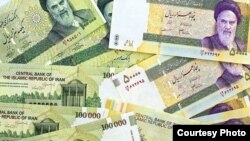Iranians voiced their dissatisfaction with declining purchasing power in protests that swept the country recently, and lawmakers have responded by promising a pay rise for some government employees, but higher wages likely won’t translate into higher living standards.
“Low-paid government employees’ salaries will rise between 10-18 percent in March,” said Mehrdad Lahouti, a member of the budget committee in the Iranian Parliament. He added that high-ranking officials such as the heads of judiciary, executive, and legislative branches of the government, cabinet ministers, MPs, and local governors won’t get a pay rise in the coming year, which begins March 21 according to the Iranian calendar.
The exact percentage of Iranian government employees to benefit from the pay rise is hard to estimate, since no details are provided, but overall government employees compromise a minority of the overall workforce.
But will a pay rise improve government employees’ purchasing power? And will freezing high-ranking officials’ salary eliminate the inequality among various income groups?
Per Capita Income In Fourth Decade of Decline
Iranians’ per capita income has been declining over the last four decades with official statistics showing a nearly 30 percent drop between 1976 and 2015. Meanwhile in countries like Turkey, Malaysia, and South Korea, whose economies were once on par with Iran, have seen consistent rises in per capita income over the same period.
Low economic growth, a depreciating currency, inflation, and unemployment have lead to the declining purchasing power despite rises in workers’ wages. Critics also point to government mismanagement of resources, corruption, and wasteful spending on military interventions in other countries as causes of declining living standards for average Iranians. Additionally, the cost of public services like education and social security are increasingly paid out of pocket by Iranians. The result is that more and more Iranian families have slipped below the poverty line in the last eight years.
Will a Pay Rise Mean Increased Purchasing Power?
Though the government was already discussing a rise in public sector employees’ salaries before the recent protests began, as the largest outpouring of popular unrest since the aborted Green Revolution in 2009, the demonstrations have given lawmakers a renewed motivation to improve living conditions.
But with inflation, high at ten percent and forecast to rise next year, it is unlikely a pay rise will improve living standards. The inflation rate for foodstuffs and housing is higher than average inflation and hits families especially hard.
Another problem is the ever-declining value of the Iranian currency, which makes imports more expensive a fuels inflation. On January 17, the Tuman hit a record low of 4,450 to the dollar. Before the 1979 revolution, the U.S. dollar equaled less than 7 Tumans; a 650 fold decline.
Where Will The Money Come From?
It is also uncertain how the government will fund its proposed pay rise with limited resources. Printing money or reducing public spending on welfare would swell government coffers, but would not help wage earners in the long run. Borrowing from the Central Bank to fund the pay rise would similarly only increase inflation.
Fundamental reforms and elimination of corruption and inequality in public spending are required to improve living standards for Iranians. Reducing the budget deficit and dispensing with wasteful spending would free up resources for long-term investment.





